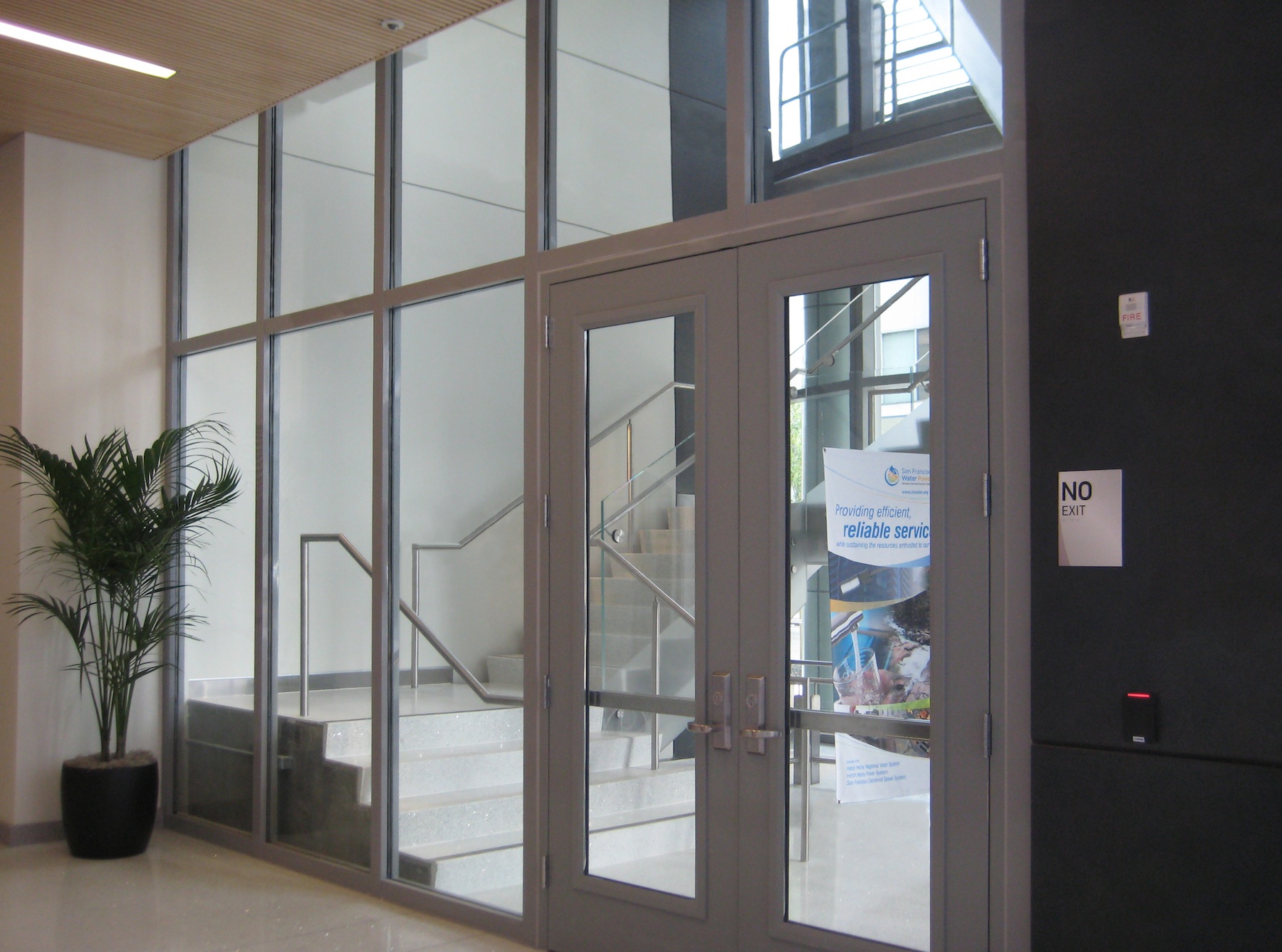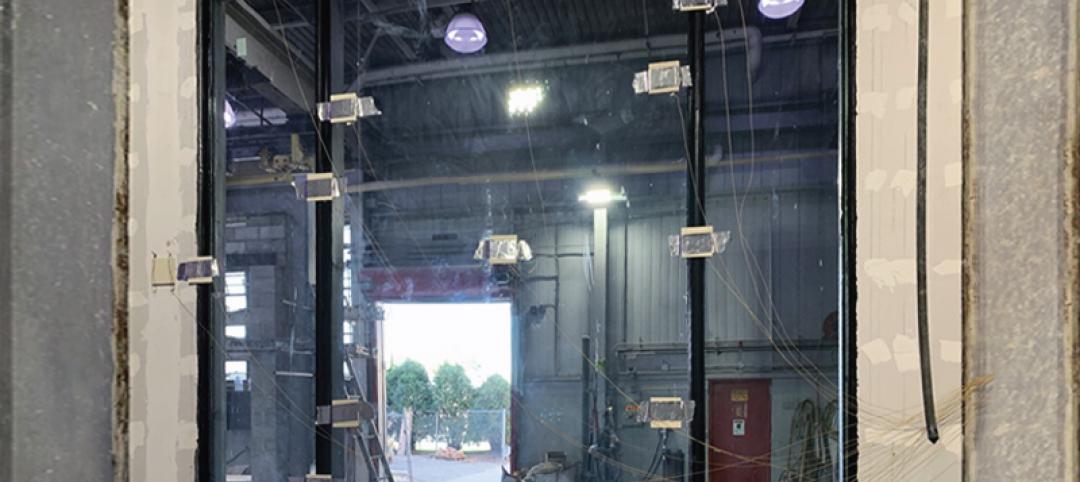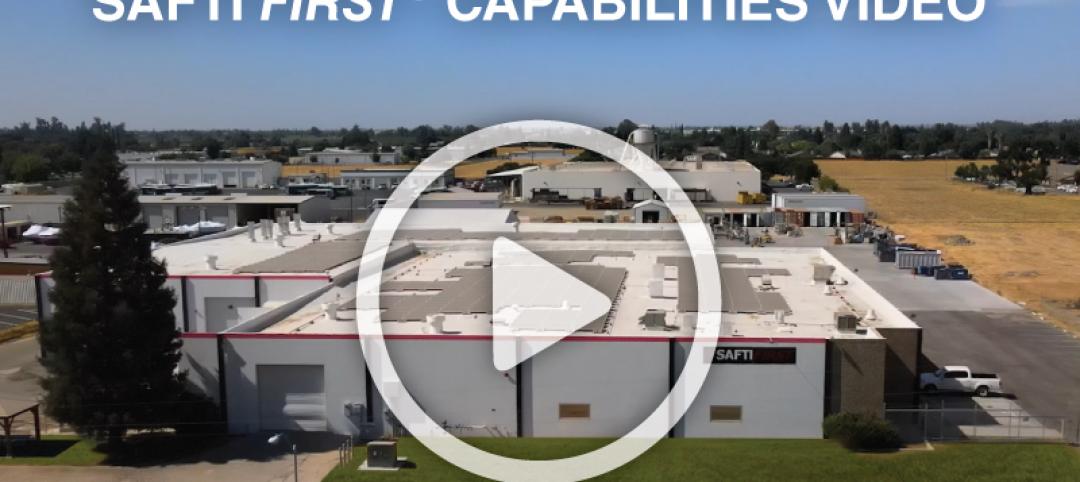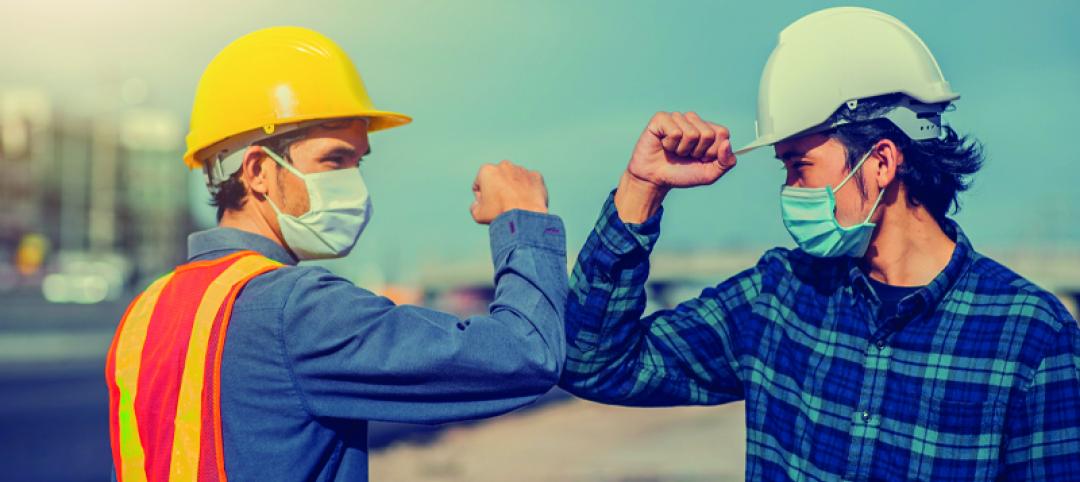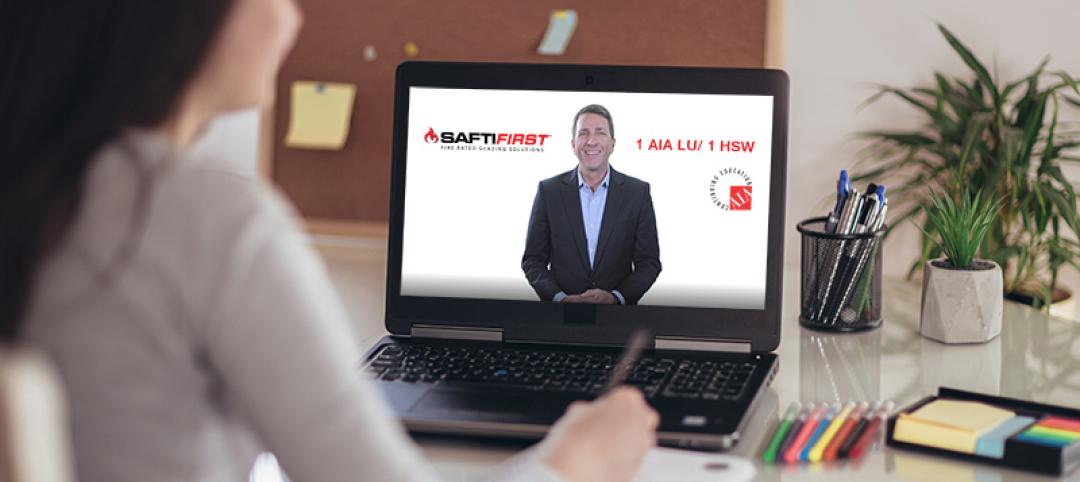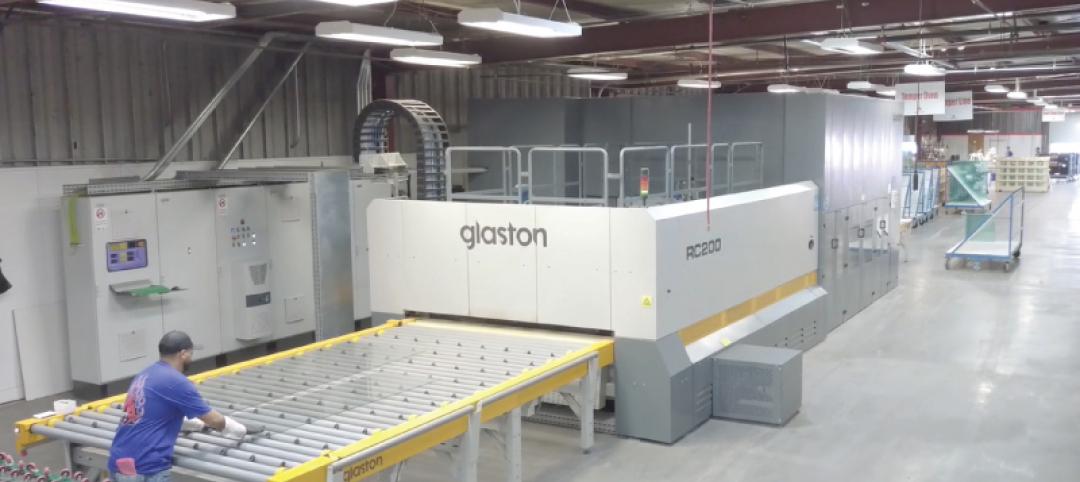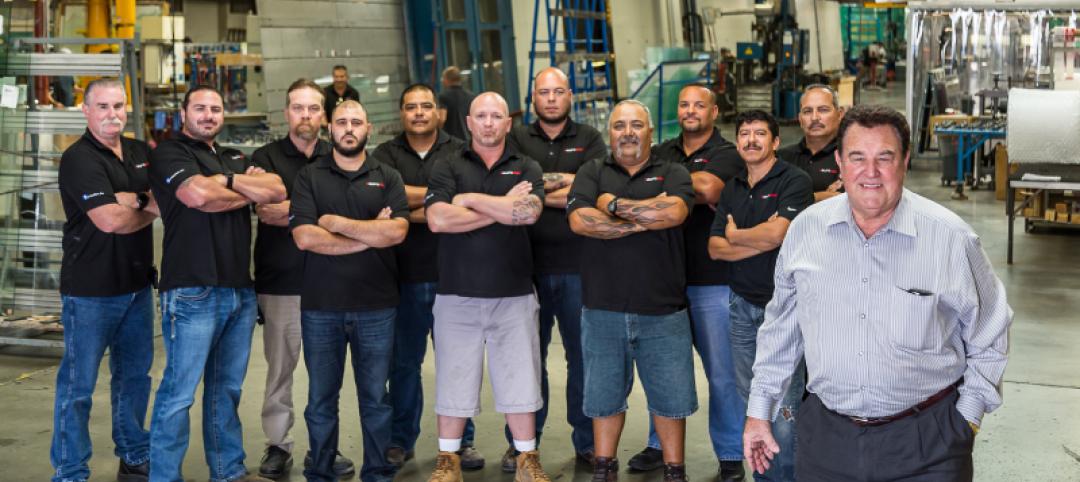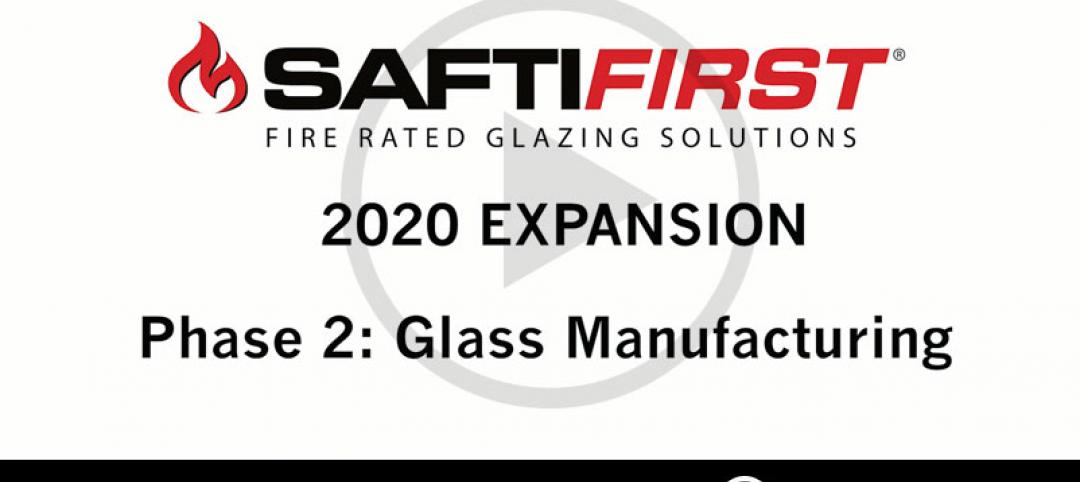The construction industry refers to the IBC model building codes and NFPA 80 and 101 guidelines for the correct and code-approved applications of fire-rated assemblies.
Unfortunately, code confusion has led to misapplications of fire rated glass and framing, which can have dangerous and/or expensive results.
Two recent NFPA 80 revisions that passed the first ballot in the current code cycle help clarify the confusion.
The first adds a fire rated glazing marking system to distinguish between fire protective vs. fire resistive glazing. The second adds an annex note to clarify situations where fire-resistive framing must be used.
NFPA 80 Update #1: Fire Rated Glass Labeling System

This addition is consistent with the marking systems previously adopted into both the IBC and NFPA 101. Under this table:
- Fire resistive glazing products that meet the fire wall test standard (ASTM E-119) and limit radiant heat and temperature rise are marked “W.”
- Fire protective products that meet the fire window test (NFPA 257) standard with hose stream but do not block radiant heat are marked “OH.”
- Fire protective glazing products that meet the door test standard (NFPA 252) are marked “D.” Products are marked “H” where they have been tested with a hose stream. An additional marking of “T” is available to designate that the product also meets temperature rise limits of at least 450 F degrees, measured at 30-minutes.
Practically speaking, fire resistive products marked “W” that pass the more restrictive 250 F degree temperature rise limit of the wall test will also meet the “T” marking criteria. It is important to know that fire protective products such as ceramics, wired glass and specialty tempered, however, do not limit temperature rise or restrict radiant heat, and should never be marked “T”.
NFPA 80 Update #2: Annex Note 6.3.3.3 and 6.3.3.4
Although the marking system and extensive IBC and NFPA 101 tables help design professionals choose the right fire protective vs fire resistive products for a given application, the same cannot be said for choosing the correct frame. This is where the proposed NFPA 80 annex note to Sections 6.3.3.3 and 6.3.3.4 helps. Simply put, where codes require fire resistive glazing, the entire framing assembly must meet the same fire resistive requirement.
Combining non-fire resistive framing products, such as standard hollow metal framing, with fire-resistive glazing downgrades the entire assembly, resulting in an insufficiently safe assembly and a failure to meet the true intent of the building code. Examples abound where the authority having jurisdiction (AHJ) has ordered the removal of these non-compliant assemblies, which if you can imagine, causes several problems for the architect, contractor and the building owner.
What’s a designer to do?
The first thing that design professionals must realize is that listing information does not equal code compliance. All fire rated glazing and framing products are required to be tested, listed and labeled by one of the nationally recognized test agencies. But remember, listing information is simply test information. It states that the products have been tested in certain sizes and certain frame applications, not that they are accepted for those sizes and end uses under a particular code.
For example, ceramics and wired glass have been tested in door vision panel sizes that exceed IBC 2012 code limits. There are also listings of ceramics and wired glass tested in hollow metal frames listed for 60-and 90-minute sidelite applications, which neither the IBC nor NFPA 101 permit.
In our industry, we routinely encounter several quote requests where the wrong glass, the wrong frame, or both, is specified for the application. As a company, we make efforts to point out the code requirements and provide alternative quotes for the right product and frame, it is an uphill battle.
For this reason, it is best to educate yourself on the code requirements and then seek out the expertise of a single-source fire-rated glass and framing manufacturer to help you choose the correct and code-approved products for every application.
Editor's note: This is sponsored content. The text and images were provided by the sponsor company.
More from Author
Bill O'Keeffe | Oct 19, 2020
Going virtual
Manufacturers use virtual platforms to help architects meet CEU requirements.
Bill O'Keeffe | Jul 16, 2020
Obsolete?
"Revolutional, affordable, USA made Fire Rated Glazing for all fire protective areas makes ceramic glazing obsolete". Check out SuperClear 45-HS and SuperClear 45-HS-LI to understand why!
Bill O'Keeffe | Feb 10, 2020
USA-made fire rated glazing goes big in 2020
We are pleased to announce and share that the second phase of this $8 million expansion, upgrading our fire rated glass manufacturing facilities in Merced, California, is underway.
Bill O'Keeffe | Nov 20, 2019
Demand for advanced, USA-made fire rated glazing “RAISES THE ROOF”
With architects specifying full-vision, code-compliant, 60 and 90 minute, temperature rise doors for exit stairwells and other code required applications, we found this as an opportunity to expand our product offerings.

